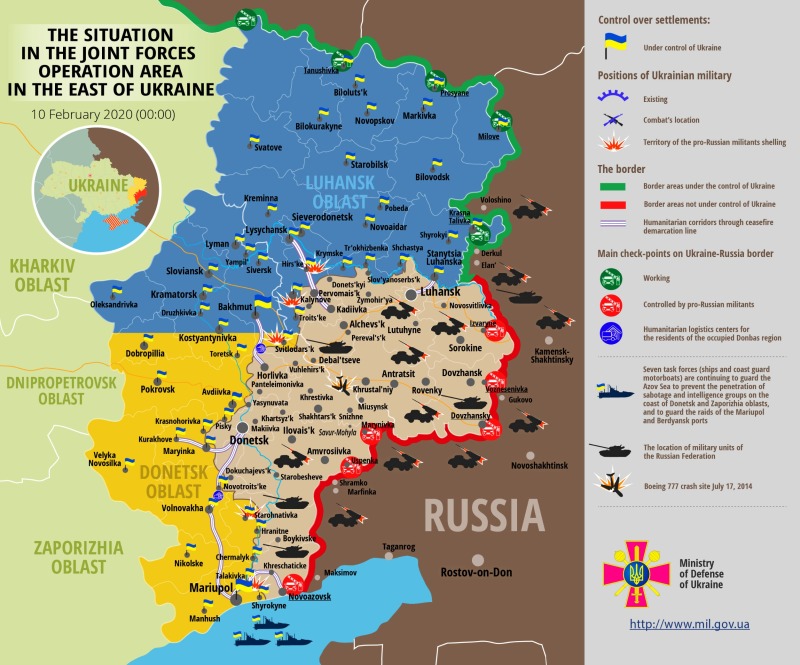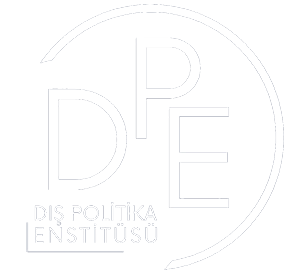Share This Article
Ukraine is a lovely country targeting EU membership. It has a well educated population and they can be considered very peaceful. However, following the end of Soviet Union, the country could not put things in order to become a nation of welfare. Instead Russian Federation continue to abuse Ukraine and provokes unrest in the country. They have some justifiable reasons for that, like Ukraine’s continuous stealing of gas from Russia’s gas lines but mostly Russia creates problems for the Ukraine.
Below there is a summary of conflict between Ukraine and Russian Federation published by thebalance.com
Ukraine Crisis Summary and Explanation
BY KIMBERLY AMADEO
Updated January 27, 2020
The Ukraine crisis is a power struggle between factions within Ukraine; one wants to align with the European Union and the other with Russia. As one of the founding states of the Soviet Union, Ukraine had been an important contributor to the Soviet Union’s economy between 1920–1991.1 In March of 2014, the current crisis erupted when Russian special forces occupied Ukraine’s Crimean peninsula, claiming it was protecting its port access to the Black Sea.2 Ukraine had planned to develop Crimea’s natural gas reserves in two years in a partnership with U.S. companies.
If they had accomplished this, Russia would have lost one of its largest customers.
Between 2014–2018, a military conflict between Ukrainian soldiers and Russian-backed separatists continued in eastern Ukraine, and more than 10,000 people were killed.3 On November 25, 2018, Russian ships attacked and boarded three Ukrainian vessels in the Crimean port of Azov near the Black Sea. It placed a freighter to block the port, stating that Ukraine had violated Russian waters, although the two sides signed an agreement in 2003 to guarantee free passage through the strait.4
Critics at the United Nations Security Council meeting said Russia’s attack was a violation under international law. The North Atlantic Treaty Organization increased its military presence in the area.5
Explaining the Conflict
Putin’s attack responded to the February 23, 2014, overthrow of his ally Viktor Yanukovych, where the pro-West faction of Ukraine’s Parliament took over the government.6 The crisis occurred because Yanukovych mismanaged the budget and forced Ukraine to ask for financial help. It appealed to the EU, then Russia, causing political unrest. Those who wanted to be closer to the EU objected when that solution was abandoned. Russia’s military strike supported Yanukovych’s return to Kiev and closer ties to Russia.
In April 2014, Russia supported local rebels who took over city halls and police stations throughout eastern Ukraine, an area home to ethnic Russians who don’t want to be part of the EU.7 Those Russians were moved there by Joseph Stalin, who intended to strengthen the Soviet Republic’s hold on the area.
Earlier that month, NATO revealed satellite photos showing Russia’s invasion of Ukraine’s eastern border.8 An EU emergency meeting added further sanctions on Russia’s oil and banking sectors, which occurred shortly after Russia sent a convoy of trucks over the border.9 They were bearing aid to Ukraine’s eastern cities, held by pro-Russian rebels. Several of those trucks entered without approval.
Ukraine had also destroyed a convoy of Russian military vehicles that were bringing arms to the rebels.10 It was the first time that Ukraine attacked Russian forces directly. A few days later, Ukraine reported that several military vehicles were near the Russian border at the Crimean port of Azov.11 It claimed that Russia was creating a second front for the rebels and wanted land access through southern Ukraine—a shorter route to Crimea.12
In July 2014, Russia built up its military force on the border.13 Since 2014, Russia has added an airborne battalion to the naval infantry brigade and doubled the number of troops to 30,000.14 It was a battle-ready force that could launch an attack into eastern Ukraine at a moment’s notice. Russia had already launched rockets across the border in support of Ukrainian rebels.
Why Ukraine Is so Important to Putin
Putin’s standoff over Ukraine boosted his popularity rating in Russia to 80%.15 To maintain this popularity, he will continue to hold onto Ukraine despite the cost. Putin knows that NATO won’t protect Ukraine since it is not a member, and that encourages him to continue to attack.
Ukraine, which provided the Soviet agricultural output, had been an important contributor to the former Soviet Union’s economy.16 It also supplied heavy industrial equipment and raw materials to industrial sites throughout the former USSR.17
Sanctions Against Russia
On July 29, 2014, the United States and the EU extended economic sanctions against Russia.18 19 They wanted to convince Putin to stop supporting those in eastern Ukraine who want to break up the country. The United States had proof that Russia supplied separatists that shot down a Malaysia Airlines commercial jet over eastern Ukraine on July 17, killing 298 people.20
The sanctions severely limit five major Russian banks’ ability to obtain medium and long-term financing from Europe. The United States also restricted technology exports to Russia’s deep-water Arctic offshore or shale oil production.9 Russia had already been ousted from the Group of Eight.21
Goldman Sachs, Bank of America Merrill Lynch, JPMorgan, Barclay’s, Deutsche Bank, and UBSBoeing are the largest investment banks doing business in Russia. Morgan Stanley announced in 2019 that it will cease operations in the country by 2020.22
United Technologies started hoarding titanium.23 In response, Russia banned imports of U.S. and European foods for one year.24 This included $300 million of U.S. poultry products.25
To head off inflation, Russia’s central bank raised interest rates.
The sanctions created a recession in Russia, and the International Monetary Fund cut its 2014 growth forecast for Russia from 1.3% to 0.2%.26 Russia is one of the emerging markets that suffered a currency meltdown in 2014.27 Forex traders abandoned these markets when the Federal Reserve began tapering its quantitative easing program, which reduced credit around the world.28 Even though Putin continues to be popular at home, these sanctions are hurting the country’s economy.
The Bottom Line
Ukraine’s desire to open its markets to the EU and to collude with U.S. companies to develop its natural gas reserves were perceived by Russia as huge threats to its economy.2930 So, in March 2014, Russia invaded and occupied Crimea.
Since then, relations between the United States and Russia have continued to deteriorate with the ongoing Ukraine conflict. Efforts to reach a diplomatic settlement have failed.
In April 2016, NATO announced its deployment of battalions to Estonia, Latvia, Lithuania, and Poland to deter further Russian aggression especially in the Baltic region.
The Baltic states have become NATO and EU members since 2004. Should Russia invade the Baltics, the United States and NATO would be compelled or bound by Article 5 of the NATO treaty to retaliate. Such could escalate into a war between Russia and the United States and its NATO allies.31
Here is another summary and current situation assesment made by glastnostgone.org
For those new to the conflict in eastern Ukraine, here’s a summary.
The below two Feb 10th situation reports, show firing by Russia’s forces on Feb 9th. The explosion graphics indicate the areas hit by this fire.
1: The conflict area lies within Ukraine’s eastern Oblasts (Provinces) of Luhansk (blue) and Donetsk (yellow). These both border Russia (brown).
2: Russia-led forces occupy part of those Oblasts, including the two regional capital cities of Donetsk & Luhansk (beige).
3: From Ukraine’s southern Azov Sea coastline (bottom light blue) to the outskirts of Luhansk city in the north, the active front line stretches for around 500km.
4: Since Sept 2014, Russia-led forces in Ukraine have had total control over 409km of Ukraine’s eastern border with Russia (thick red line). Effectively, this means Russia has complete control over 409km of Ukraine’s eastern border. Much of the border area is remote & sparsely populated, making it easy for Russia to send in supplies and military forces. Along with controlling numerous Ukrainian border crossings, Russia also controls two rail lines into eastern Ukraine.

5: Since 2015, the front line has remained virtually unchanged, with each side dug in along it. Over the last few years, both sides have occupied a few small undefended villages and settlements located between the front lines, but since 2015, it has mainly been a long-range firing conflict. I say long-range, but some military positions are only a few hundred meters away from each other.
6: Inside the occupied territory, two Russia-backed, so-called republics were created: The Donetsk People’s Republic (DPR) & Luhansk people’s Republic (LPR).
7: These self-proclaimed republics, haven’t published any wage expenditure accounts or explained how they could afford to pay the monthly wages of the tens of thousands of troops defending their territory. Neither have they presented any verifiable evidence as to how they acquired their vast amounts of military hardware, including hundreds of tanks.
8: After almost 6 years of daily firing along the front line and weekly live firing exercises, the Donetsk & Luhansk republics forces have never run out of ammunition. It’s safe to say they have an endless supply.
9: Previously, the DPR & LPR claimed they capture all their hardware and ammo from the Ukrainian army, but if the front lines been static for the best part of five years, they haven’t had an opportunity to capture diddly squat.


